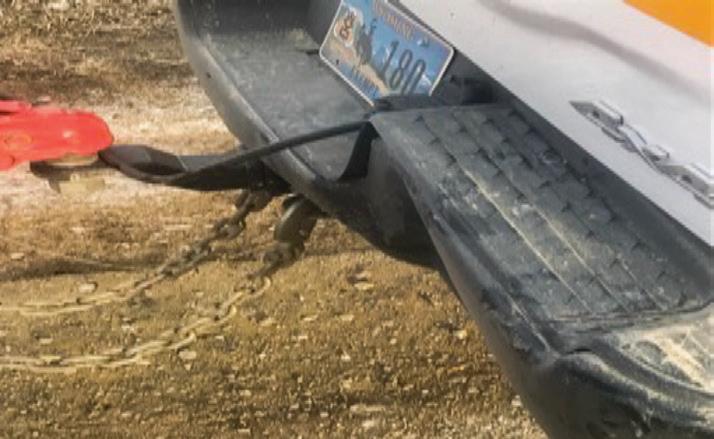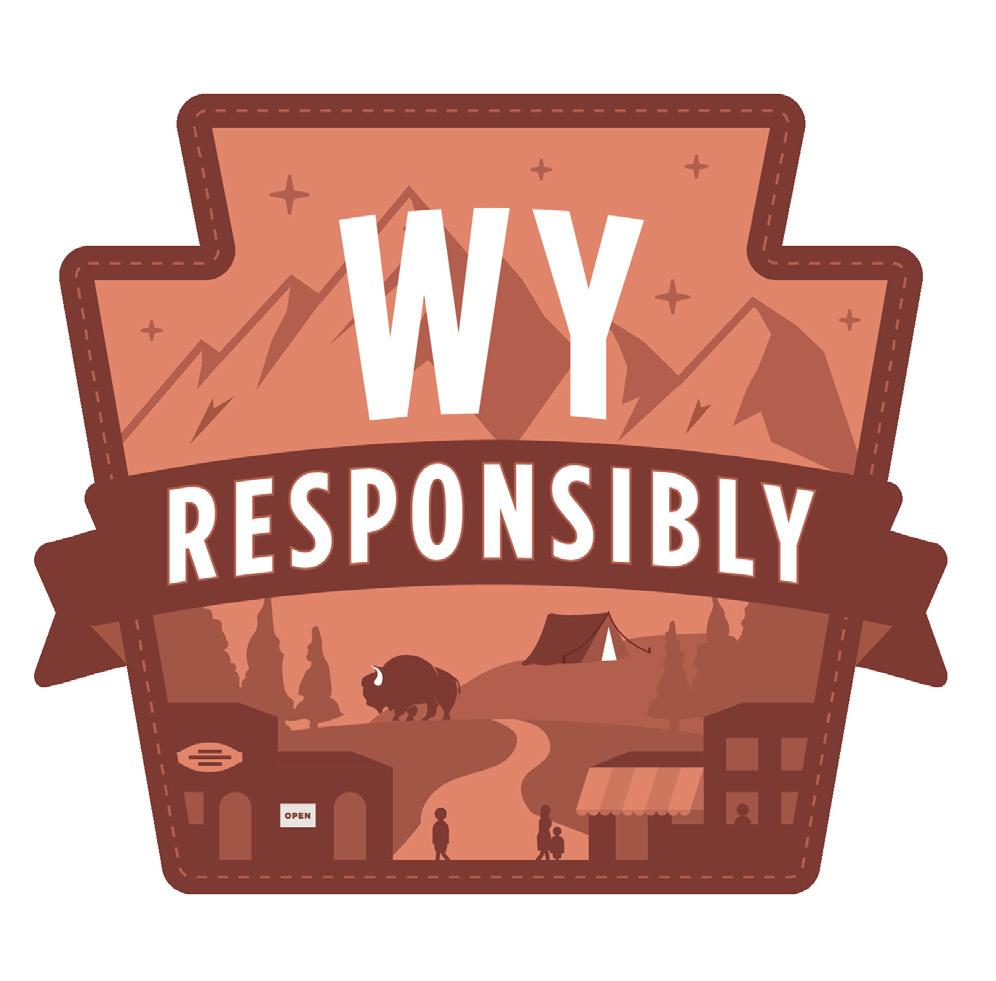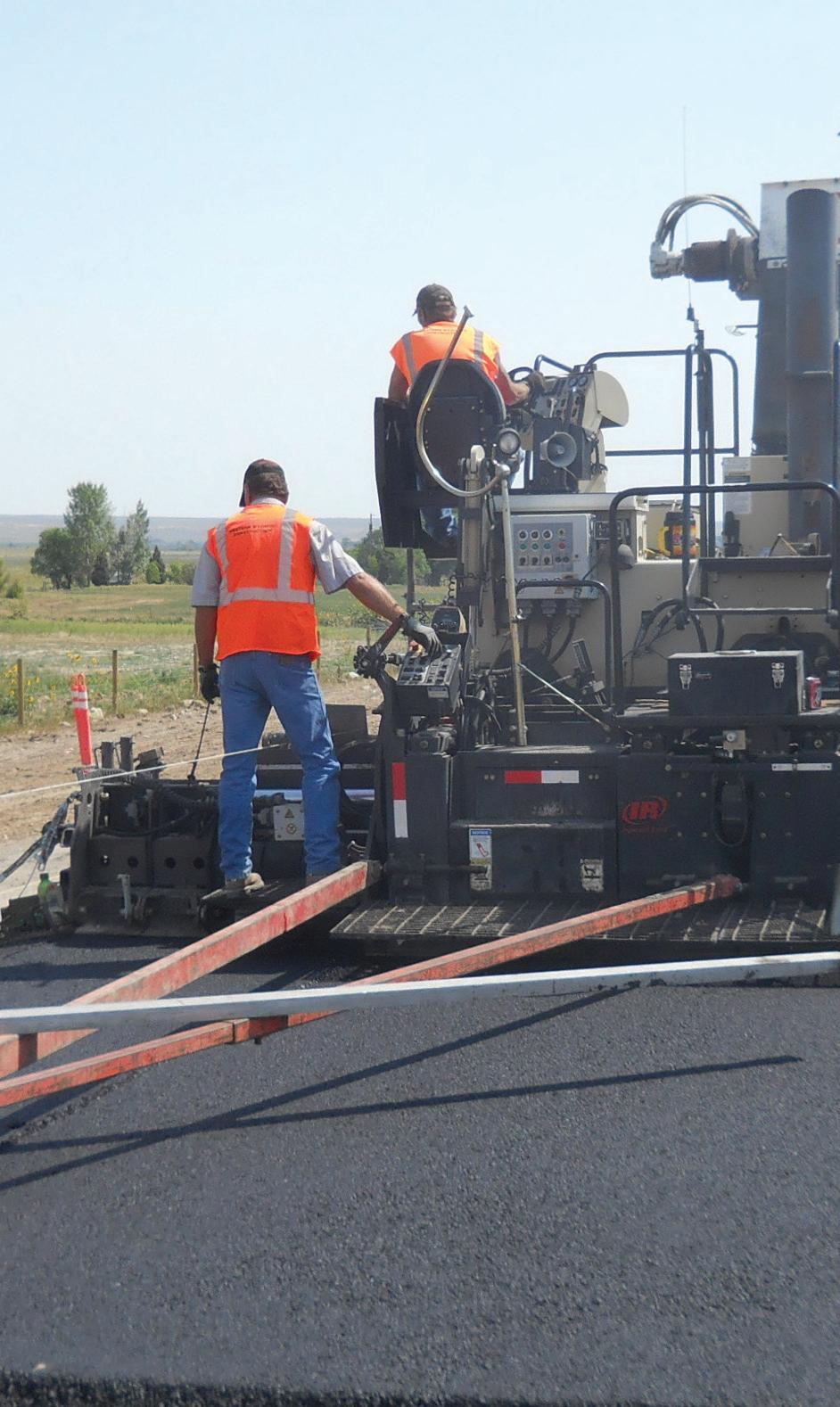
4 minute read
Employee Safety
from May 2021 Interchange
by WYDOT
Disconnected trailer causes damage to WYDOT truck
On March 21, a WYDOT vehicle was towing a trailer down the highway. The vehicle was traveling between 30-35 mph when it went over a bump in the road. The driver observed in the rear view mirror that the trailer had come disconnected. When the driver attempted to slow down and safely come to a stop, the towing vehicle was struck by the trailer, causing damage to the WYDOT vehicle.
This could have been prevented. Below are some pre-inspection recommendations:
Hitching using a ball mount system
1.Ensure each part of the hitch system is in good condition. 2.Ensure that the hitch/receiver, ball mount, coupler and safety chains or cables (including all attachment components) are sufficient for the loaded capacity. Each component must be equal to, or greater than, the GVWR of the trailer. 3.Ensure the ball mount is the correct size, matching the coupler for proper fit. Both the ball and the coupler should have the size noted directly on the part. 4.Ensure the ball mount is at the proper height to ensure the trailer is parallel to the ground when loaded and towed. 5.If not permanently affixed, attach the ball mount according to the manufacturer’s instructions. 6.Attach the coupler to the ball mount according to the manufacturer’s instructions. 7.Attach the safety chains from the trailer to the tow vehicle.
Remember, safety chains are the first line of defense if the trailer detaches. • The chains should crisscross to form an ‘X’ beneath the trailer tongue to catch the tongue before making contact with the ground, should the trailer disconnect from the tow vehicle. • Each chain should have a separate attachment point to the tow vehicle and shall be rated for the GVWR of the trailer. • If possible, the chains should be looped back to hook onto themselves. • Do not hang an S hook on the opening of the receiver hitch, as it might bounce off while driving. Instead, loop it through the opening and connect it to the chain. 8.Connect any pin connectors for lighting and, if applicable, brakes. 9.Ensure the trailer lights are in working order.
All types of equipment and tools used by WYDOT employees should be inspected prior to use and by design. This simple inspection can prevent WYDOT from other towing accidents. n

Photo: WYDOT
Hanging rack system taken out of service
An employee was walking through the yard and began to look at the hanging rack system at one of our locations. The employee identified damage to the rack system and reported the damage. Photo: WYDOT Upon investigation, Damaged hanging racks should be marked it was determined that the rack system with caution tape, cones and signage warning employees to not operate the rack. was damaged when a tailgate was being installed on an 8-yard truck. The operator did not disconnect the tailgate after it was pinned onto the truck and began to drive away. The force of the truck pulling on the overhead crane damaged the rack system by breaking the overhead supports and breaking welds.
Hanging rack system
Based on this event, Employee Safety recommends all sander racks and associated equipment be inspected by a qualified technician. This equipment would include the inspection of chains, hoists, pulleys, straps, foundation anchorage, welds, supports, cross members and overall condition of the racks to verify they are in good operable condition. This qualified technician inspection is a documented inspection and should be completed on a yearly basis.
Supervisors should also ensure that a monthly documented inspection looking at the above mentioned areas is conducted. If the hanging rack system shows sign of wear, damage, or if it poses a potential hazard, the rack should be taken out of service until an inspection and repairs deem it safe to operate. If the rack is taken out of service, please use caution tape, cones, and signage directing employees not to operate the rack system (see picture at the top of this safety flash).
Reference
OSHA regulates the construction and use of these racks under several regulations: 1910.176 Materials Handling and Storage, 1910.179 Overhead and Gantry Cranes, 1926 Subpart R – Steel Erection, and well as requiring these systems to be engineered. An engineered system is one that has been tested and validated by a professional engineer per OSHA and any required National Consensus Standard like ANSI. These systems also have to have a load rating assigned by an engineer, load rating signage, and these systems have to be tested yearly by a competent person. The new 4-yards and 8-yards WYDOT is purchasing are now coming with free standing sanders and portable tanks. As WYDOT replaces these trucks, the numbers of hanging sanders are declining.
If you have questions please contact Employee Safety for help determining if your rack system is good to use or not. n





